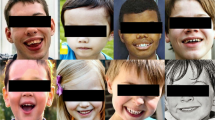Abstract
Autism spectrum disorder (ASD) is a degenerative sickness which affects brain development that ultimately destroys the physical appearance of the face. ASD is one of the most frequent acute neurodevelopmental illnesses in the world today (ASD). It is a lifelong disorder that hampers an individual’s conduct and communication abilities. The paper suggests a unique approach for identifying ASD using a machine classifier. Additionally, machine learning (ML) classifier models provide ASD class types coupled with evaluation criteria. DenseNet was established partly to address the worsening accuracy in high-level neural networks caused by the removal of the gradient. ASD is a sort of mental condition that may be discovered through the study of social media data and biological imaging. A recent study has shown that ASD may be detected merely by utilizing facial pictures. DenseNet machine learning models are pre-trained in this work to categorize face photos as either healthy or perhaps autistic. Autism may be diagnosed by traits such as eye, nose, and lip distance in an image and layout. Machine learning techniques may be used to recognize such landmarks, but pinpoint technology for retrieving and reconstructing the right patterns from data given. By deploying a simple web tool based on a machine learning algorithm, our study supports the medical facilities in recognizing autism based on the features of the face.
Access this chapter
Tax calculation will be finalised at checkout
Purchases are for personal use only
Similar content being viewed by others
References
Luca R, Andrea F (2018) Brief report: when large becomes slow: zooming-out visual attention is associated to orienting deficits in autism. JASD 48(7):2577–2584
Elsabbagh M, Fernandes J, Webb SJ (2013) Disengagement of visual attention in infancy is associated with emerging autism in toddlerhood. Biol Psychiatry 74(3):189–194
Jiang M, Zhao Q (2017) Learning visual attention to identifying people with autism spectrum disorder, pp 3267–3276
Mann TA, Walker P (2018) Autism and a deficit in broadening the spread of visual attention. J Child Psychol Psychiatry 44(2):274–284
Sacrey LAR, Bryson SE, Zwaigenbaum L (2014) Impairments to visual disengagement in autism spectrum disorder: a review of experimental studies from infancy to adulthood. Neuroscience 47:559–577
Zaman N, Ferdus J, Sattar A (2021) Autism spectrum disorder detection using machine learning approach. ICCCNT. https://doi.org/10.1109/ICCCNT51525.2021.9579522
Maye MP, Sheldrick RC, Carter AS (2017) Age at first identification of autism spectrum disorder: an analysis of two us surveys. Adolescent Psychiatry 56(4):313–320
Misman MF et al (2019) Classification of adults with autism spectrum disorder using deep neural network. AiDAS 29–34. https://doi.org/10.1109/AiDAS47888.2019.8970823
Mostafa S, Tang L, Wu F (2019) Diagnosis of autism spectrum disorder based on eigenvalues of brain networks. IEEE Access 7:128474–128486. https://doi.org/10.1109/ACCESS.2019.2940198
Baio J (2014) Prevalence of autism spectrum disorder among children aged 8 years-autism and developmental disabilities monitoring network, US
Author information
Authors and Affiliations
Corresponding author
Editor information
Editors and Affiliations
Rights and permissions
Copyright information
© 2023 The Author(s), under exclusive license to Springer Nature Singapore Pte Ltd.
About this paper
Cite this paper
Karri, V.S.S., Remya, S., Vybhav, A.R., Ganesh, G.S., Eswar, J. (2023). Detecting Autism Spectrum Disorder Using DenseNet. In: Tuba, M., Akashe, S., Joshi, A. (eds) ICT Infrastructure and Computing. Lecture Notes in Networks and Systems, vol 520. Springer, Singapore. https://doi.org/10.1007/978-981-19-5331-6_47
Download citation
DOI: https://doi.org/10.1007/978-981-19-5331-6_47
Published:
Publisher Name: Springer, Singapore
Print ISBN: 978-981-19-5330-9
Online ISBN: 978-981-19-5331-6
eBook Packages: Intelligent Technologies and RoboticsIntelligent Technologies and Robotics (R0)




